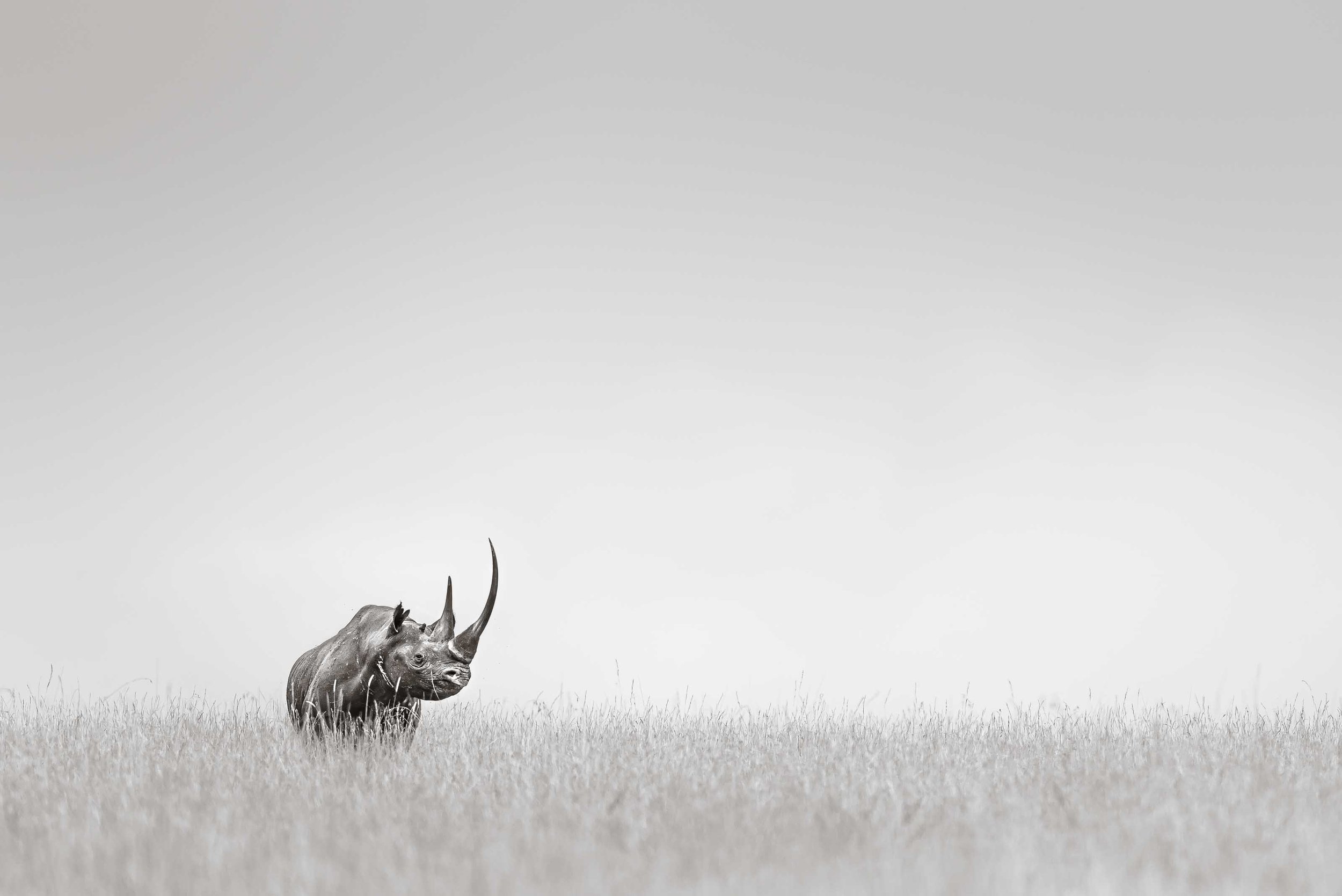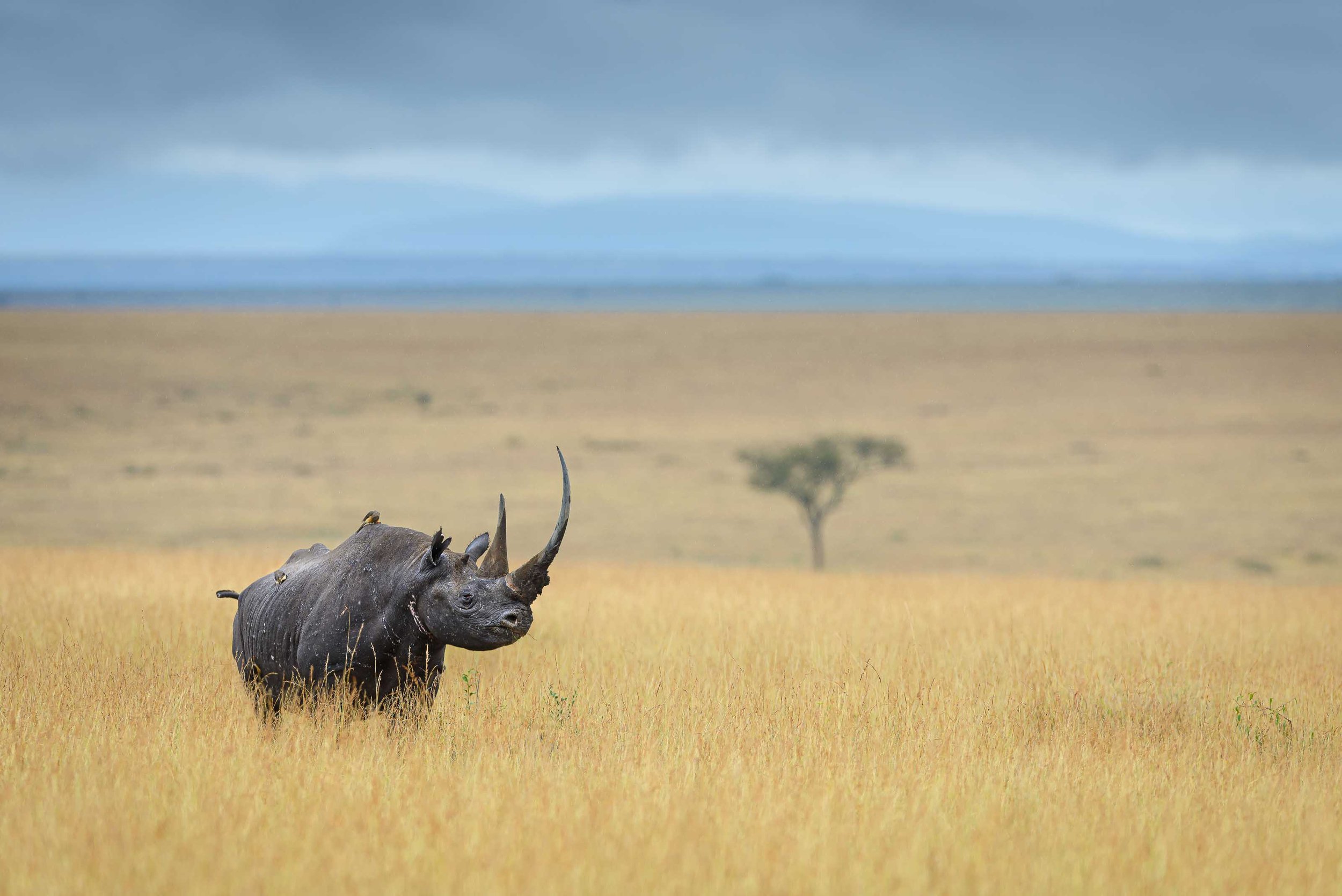World Rhino Day: Shining the Spotlight On The Majestic Rhinoceros
If any animal embodies the struggle of Africa’s wildlife against human encroachment, it’s the black rhinoceros.
Before our time, when nature was in charge, rhinoceros were commonplace. They once roamed freely in vast numbers. Today, the rhino population in Africa is fewer than 5,600 – a sobering reminder of how much has changed.
The Rhinos' fight for survival
There are five rhino species in the world today and, sadly, every single one is under threat. The Javan rhinos and Sumatran rhinos are critically endangered, with fewer than 80 individuals left in the wild.
These magnificent creatures, which have survived for millions of years, now face extinction primarily due to human actions—most notably poaching and habitat loss.
Why Rhinos are endangered
Rhinoceros, with their thick armour-like skin and formidable horns, are one of the original Big Five—the five wild animals once considered the hardest to take down by hunters. For years they have been hunted relentlessly, not for their flesh or their skins but for their horns.
Despite no scientific evidence supporting the belief, rhino horn remains highly prized in some cultures for its so-called medicinal properties.
On the black market, rhino horns fetch exorbitant prices, and this illegal trade has decimated rhino populations, especially in Africa.
The great irony is that a rhino's horn holds no value to us—made of keratin, it is no more valuable than our own hair or nails. Yet, to the rhinoceros, their horns mean everything. They are tools of protection and defence, symbols of strength and survival in the wild.
World Rhino Day: A time to reflect and act
World Rhinoceros Day, held annually in September, is a day dedicated to honouring these incredible creatures and raising awareness about their endangered status.
It serves as a reminder that while we admire the sheer beauty and strength of the rhinoceros, we must also recognise the urgency of protecting them before it's too late.
Capturing the magnificence of Rhinos
As a wildlife photographer, I’ve had the privilege of capturing African rhinos in their natural habitat over the years. But I fear that in the not-so-distant future, others may not be so fortunate.
It’s a heartbreaking thought, but if we don’t act now, future generations may only know rhinos through photographs and stories.
Defying all odds: Karanja’s story
Karanja, the African black rhino in many of my most treasured photographs, was a rare individual who lived a long life under the careful protection of rangers. He was the most famous rhino in the Maasai Mara in Kenya and had the longest rhino tusk – it was an incredible 34 inches!
While so many of his kind are lost to poaching, he thrived in the wild until passing naturally in 2014 at the age of 42.
Over the years, I photographed him many times. His story is proof that with protection and dedication, African rhinos can live a full and long life, as nature intended. For most rhinos though, their stories end far too soon. Their lives are cut short because of senseless poaching.
Rhinocerous images, like my photographs of Karanja shown here, are visual reminders of what we’re going to lose if rhino poaching continues. I hope that they convey how majestic these creatures are and help highlight how critical rhino conservation efforts are.
Why Rhinos matter
Rhinocerous are magnificent in so many ways but they are also essential to the ecosystems they inhabit. As megaherbivores, they play a critical role in shaping landscapes:
Their grazing patterns maintain the health of grasslands and forests
This, in turn, supports biodiversity, helping other species thrive in the rhinos habitat
Without rhinos, the balance of these ecosystems would be disrupted, potentially leading to further wildlife loss and degraded environments.
Rhino Conservation: The ongoing fight
Some organisations, governments, and local communities have been working to protect rhinos from poachers and safeguard their habitats in recent years. Thankfully, white rhino populations, for instance, are beginning to stabilise as a result.
But the fight is far from over. Rhinos still face an uncertain future.
Through ongoing conservation efforts, education, and a concerted push to end the demand for illegal wildlife products, I truly believe we can secure a future for rhinos. There is still time for us to protect these incredible animals—still time for us to look back without regret.
Rhino fine art prints: A tribute to Karanja
In honour of these wonderful creatures on World Rhinoceros Day, and to contribute to their conservation, I offer fine art prints of Karanja, available in both full colour and black and white. Rhinos also feature in my wildlife photography books. Discover all these in my online store.
David





